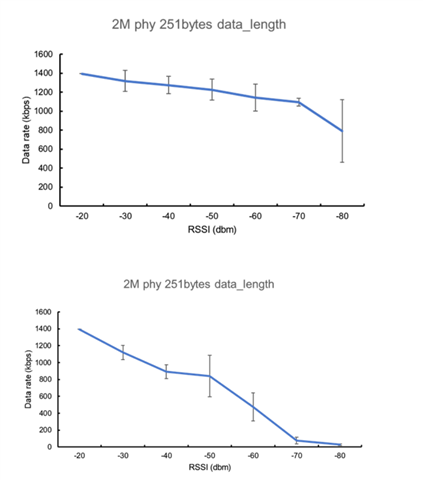Hi,
I am using two nRF52833 DK and both are connected with nRF21540.I notice that when I have a very high throughput, never stop sending 244 bytes, I will notice that average current reach up to 60mA(1.8V) when Tx and RX are close to each other. However, when I move away for 5m, the current drop to 20mA (1.8V). I guess it's because some connection has falied so some interval are not sending data. Here is a video:
My com paramters are:
.interval_min = 320, .interval_max = 320, .latency = 0, .timeout = 400, /* supervision timeout, 单位 10 ms */
They are the same with Bluetooth: Throughput defualt setting.
Does that means a lot packet loss? I have test datarate vs RSSI at this ticket and notice two different result. One shows RSSI has no ralationship with data rate. Even low RSSI can have high data rate given in this ticket. Another result shows lower RSSI lower data rate, which is compatible with this current change.

Which one is correct?Thank you so much for your help!


